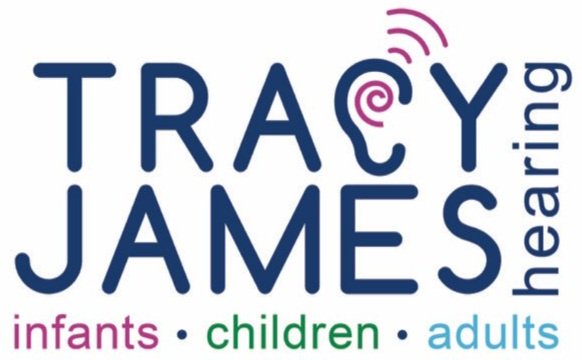Beyond Silence: 22 Ways to Build Effective Communication - Deaf Awareness Week 5th - 11th May
Deaf Awareness Week 2025 is held from 5th-11th May
This annual event is dedicated to raising awareness about the Deaf community, promoting understanding of Deaf culture, and celebrating the diversity of communication methods. The theme for 2025 is…
"Beyond Silence," encouraging greater understanding of how Deaf and hard-of-hearing individuals communicate.
How many methods of communication can you think of that enables you to communicate with a deaf or hard of hearing person and for them to communicate more effectively with you? Maybe 1 or 2? Sign language or via hearing aids maybe?
There are in fact a vast amount of ways to communicate more effectively with those that are deaf and hard of hearing, in this blog we cover 22 of the most common ones (but there will be many more!)
22 Ways you can build effective communication with individuals who are deaf and hard of hearing
Visual Communication Methods
Finger Spelling (British Sign Language)
1) British Sign Language
Learning British sign language (A complete language using hand-shapes, body language/movements and facial expressions.) opens up communication and connections between yourself and individuals within the deaf community.
2) Finger Spelling
Spelling out words letter by letter using hand-shapes, can be used to spell out names or unknown signed words.
3) Lipreading (Speech reading)
Many deaf and hard of hearing people understand speech by interpreting the movement of the speakers lips, this can be challenging as many sounds look similar on the lips. For example mouth to yourself ‘pat, bat and mat’, You will notice that they have a very similar visual apearance on the lips. You can help overcome this by also using other forms such as gesture and body language along side it….
4) Gesture and Body Language
Used by the deaf or hard of hearing individual, and also by those communicating to them, to convey meaning directly through facial expressions, gestures and body movements. For example pointing to the object you are referring to or doing an action that represents it and/or showing the expression of the feeling you want to communicate.
5) Visual Aids
Using pictures, diagrams, written notes and text messages to supplement or replace auditory information, making communication more accessible.
6) Cued Speech
A visual communication system that uses hand-shapes by the mouth in specific positions to clarify spoken language and distinguish between similar looking lip movements.
7) Deaf Blind Communication
Some examples are signing on to the hands of the receiver or placing their hands on the speakers face to feel vibrations or movements (Tadoma method)
8) Makaton
A unique simplified language programme that uses signs and symbols alongside speech to help individuals communicate. Often used by individuals with learning difficulties and young children.
Communication Support Services
9) Sign Language Interpreters
Professionals who facilitate communication between deaf and hearing individuals by interpreting spoken language into sign language and vice versa (you may have been to the theatre or watched a TV programme and seen an interpreter in the side.)
10) Speech to text reporters (CART Providers)
CART stands for Communication Access Real-time Translation and is a service where professionals provide real-time transcription from spoken language into text (you may have seen this in action on live TV if you pressed the transcribe button.)
11) Lip speakers
A hearing person who is especially trained to speak clearly and use facial expressions and gestures to make their speech easier to lip read. They are used where clear communication is essential for a lip-reader, such as at medical appointments, legal proceedings or at workplace/educational meetings.
12) Communication support workers (CSW’s)
Individuals who are trained to provide various forms of communication assistance tailored to the needs of the deaf or hard of hearing person to enable then to have equal access to information and participate in fully in various settings. They may use sign language, lip reading, note taking or speech to text reporting and work in a variety of settings (such as Education, legal, Social services and the work place) to support learning, promote inclusion and may also provide advice and guidance to hearing individuals in regards to more effective communication for the deaf or hard of hearing individual.
Auditory Based Communication Methods (Often used by hard of hearing individuals)
13) Spoken Language
Many Hard of Hearing individuals retain the ability to speak and understand spoken language to varying degrees, often with the assistance of hearing aids or cochlear implants
14) Residual Hearing
Utilizing any remaining hearing with amplification (hearing aids, cochlear implants, personal listening devices) to understand speech and environmental sounds.
15) Clear Speech Strategies
Speaking clearly at a moderate pace without shouting or exaggerating lip movements can be helpful, reducing background noise is also crucial
Technological Aids
16) Hearing Aids
These Devices amplify sound to make it easier to hear. At Tracy James Hearing we provide hearing aids for both adults and children. We are independent which means that we have the freedom to offer a wide range of hearing aids, from a variety of different manufacturers, to find the right one that will work for you, your lifestyle, hearing needs and personal preferences. Find out more here
17) Cochlear Implants
These are surgically implanted devices that can provide a sense of sound to individuals with severe to profound hearing loss. You may have heard Tasha from Love Island / Strictly come dancing fame talk about her cochlear implant
18) Assistive Listening Devices (ALD’s)
These include FM systems, infared stystems and loop systems that help improve clarity in various situations by amplifying sound and/or reducing background noise.
19) Texting and Email
Highly accessible written forms of communication. As they don’t require both parties to be present at the same time, these methods give the individual much appreciated time to respond. Written communication often provides more clarity so conversations can be less prom to misinterpretation. It also enables the individual to communicate independently without needing a third party interpreter giving the deaf or hard of hearing person a greater sence of autonomy and control in their interaction.
20) Video Communication with Captions or Sign Language Interpreters
Platforms are increasingly offering video calls with captioning or the options to include a sign language interpreter remotely.
21) Speech to text apps and services
A technology that converts spoken words into written text in real time (you may have seen this feature recently in your voicemail messages.)
22) Alerting devices
These are specialised tools designed to notify individuals with hearing loss about important sounds and events in their environment (Such as flashing lights or vibrations for doorbells, alarms and phones) to ensure crucial alerts are not missed.
It is important to remember that each deaf or hard of hearing individual has their own preferred communication methods based on their own personal experiences, the degree and nature of their hearing loss and their language background. Asking someone how they prefer to communicate is always the best approach.
At Tracy James Hearing our aim is to look after your hearing with our range of assessment and treatment services.
Our hearing assessments are bespoked to you and include ear examination, hearing test, diagnostics, tinnitus advice and management and consideration of hearing aids.
If you think you have a hearing loss, or if you already have hearing aids and you’re not happy with them, you can make an appointment to have a hearing assessment with us….
Resources:
The British Deaf Association (BDA), National Deaf Children's Society, and UK Council on Deafness offer resources and information about Deaf Awareness Week, including tips for communication and making events more accessible.








